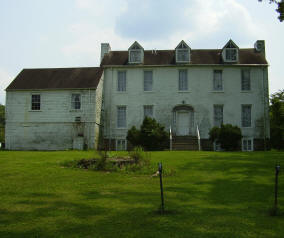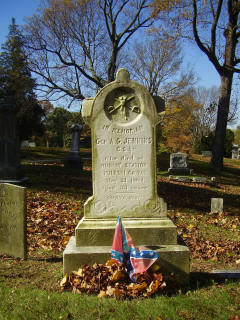|
Doors [ Back ] -------------------- -------------------- -------------------- Last Hanging in Huntington 1892 -------------------- Barboursville -------------------- -------------------- Early Pioneer of Cabell County -------------------- -------------------- -------------------- -------------------- -------------------- -------------------- -------------------- |
||||||||||||
|
Doors to the Past |
||||||||||||
Albert Gallatin Jenkins
BRIGADIER GENERAL
ALBERT G. JENKINS Early Life and Career Albert Gallatin Jenkins (November 10, 1830 – May 21, 1864) was an attorney, planter, representative to the United States Congress and First Confederate Congress, and a Confederate Brigadier General during the America Civil War. The commander of a brigade of cavalry from what became West Virginia, he was mortally wounded at the Battle of Cloyd's Mountain near Dublin.
Civil War With the outbreak of the Civil War and Virginia's subsequent secession, Jenkins declined running for a third term and resigned from Congress in early 1861. He returned home and raised a company of mounted partisan military partisan rangers. By June, his company had enrolled in the Confederate army as a part of the 8th Virginia Cavalry, with Jenkins as its colonel. By the end of the year, his men had become such a nuisance to Federal interests in western Virginia that Governor Francis H. Pierpont appealed to President of the United States President Abraham Lincoln to send in a strong leader to stamp out rebellion in the region. Early in 1862, Jenkins left the field to become a delegate to the First Confederate Congress. He was appointed brigadier general August 1, 1862, and returned to active duty. Throughout the fall, his men performed well, continuing to harass Union Army Union troops and supply lines, including the vital Baltimore & Ohio Railroad. In September, Jenkins' cavalry raided northern Kentucky and West Virginia, and briefly entered extreme southern Ohio near Buffington Island, becoming the one of the first organized Confederate units to enter a Northern state. In December, Robert E. Lee requested that Jenkins and his men transfer to the Shenandoah Valley. After spending the winter foraging for supplies, he led his men on a raid in March 1863 through western Virginia. During the Gettysburg Campaign, Jenkins' brigade formed the cavalry screen for Richard S. Ewell's Second Corps. Jenkins led his men through the Cumberland Valley into Pennsylvania and seized Chambersburg, Pennsylvania Chambersburg, burning down nearby railroad structures and bridges. He accompanied Ewell's column to Carlisle, Pennsylvania Carlisle, briefly skirmishing with Union militia near Harrisburg, Pennsylvania Harrisburg. During the subsequent Battle of Gettysburg, Jenkins was wounded on July 2 and missed the rest of the fighting. He did not recover sufficiently to rejoin his command until autumn. He spent the early part of 1864 raising and organizing a large cavalry force for service in western Virginia. By May, Jenkins had been appointed Commander of the Department of Western Virginia with his headquarters at Dublin. Hearing that Union Brig. Gen. George Crook had been dispatched from the Kanawha River Kanawha Valley with a large force, Jenkins took the field to contest the Federal arrival. On May 9, 1864, he was severely wounded and captured during the Battle of Cloyd's Mountain. A Union surgeon amputated Jenkins' arm, but he never recovered, dying twelve days later. He was initially buried in New Dublin Presbyterian Cemetery. After the war, his remains were reinterred at his home in Greenbottom, near Huntington, West Virginia. He was later reinterred in the Confederate plot in Spring Hill Cemetery in Huntington.
Memorialization Jenkins' home, ''Green Bottom'', has been restored and is now a museum run by the West Virginia Division of Culture and History. In 1937, Marshall University constructed Jenkins Hall, naming it in honor of the distinguished Confederate cavalry officer. In 2005, a monument to General Jenkins was erected in Mechanicsburg, Pennsylvania, commemorating his service during the Gettysburg Campaign.
The above Article was taken from
the
The Jenkins Slave-Carteraker -------------------- Note: Click on the link below for the story. |
||||||||||||


